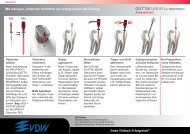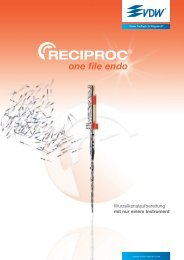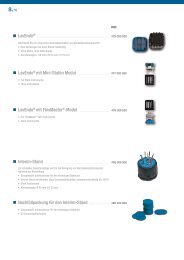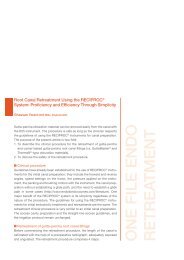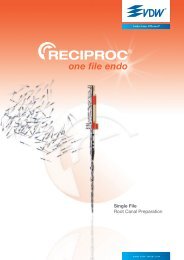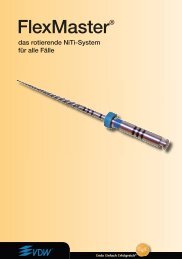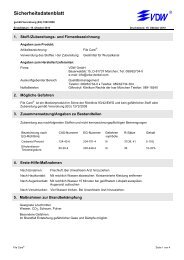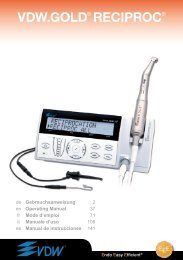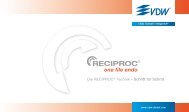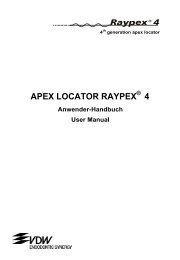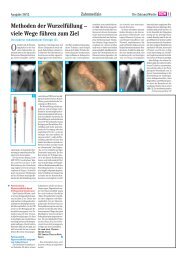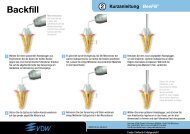Sterile Endo Instruments - Vdw-dental.com
Sterile Endo Instruments - Vdw-dental.com
Sterile Endo Instruments - Vdw-dental.com
You also want an ePaper? Increase the reach of your titles
YUMPU automatically turns print PDFs into web optimized ePapers that Google loves.
Infection Control and Quality Managementin the Dental Practice<strong>Sterile</strong>3Why has the multiple-use of endodontic instrumentsattracted so much attention lately?Current re<strong>com</strong>mendations by the Robert Koch Institute(RKI) dating from 2001 and 2006 (on “Infection ControlRequirements for Re-processing Medical Devices;Infection Prevention in Dentistry – Infection ControlRequirements 1,2 ”) classify endodontic instruments ascritical B. This means that stricter requirements applyto the re-processing of such instruments. Only cleanmedical devices can be efficiently sterilised, whichmeans that cleaning is a particularly important step inthe re-processing cycle of a medical device. Therefore,an efficient cleaning procedure which avoids possiblecross-contamination needs to be carried out. Blood,secretion or tissue remnants need to be removed orthe subsequent cleaning, disinfection and sterilisationwill be impeded.The minimum requirement is that no residue is visibleto the naked eye (without magnification) on any partof the medical device after cleaning/disinfection. Thisimplies a <strong>com</strong>prehensive inspection of every singleinstrument before sterilisation.It is difficult enough to safely and <strong>com</strong>prehensivelyadhere to these requirements in daily practice, includingall consequences which might arise, as well asto document all steps in <strong>com</strong>pliance with legal requirements.To <strong>com</strong>plicate matters further, endodonticinstruments <strong>com</strong>e into direct contact with nervetissue which, in the case of Creutzfeldt-JakobDisease, can potentially be infectious. Even if it has notyet been possible to detect prions in the pulp tissue ofpatients with CJD yet, animal experiments have shownthe possibility of <strong>dental</strong> transmission 3 .Moreover, by using the current disinfection and sterilisationprocedures, it cannot be 100 % guaranteed thatprions are <strong>com</strong>pletely destroyed.That is why, for example, the British SpongiformEncephalopathy Advisory Committee (SEAC) hasre<strong>com</strong>mended single-use of endodontic instrumentsas an infection control measure since May 2006. 4In April 2007, the British Department of Health wentone step further and issued a clear directive forsingle use. 5In cases where these re<strong>com</strong>mendations are notfollowed and an endodontic instrument is re-usedon another patient, a stringent re-processing protocolneeds to be followed in order to eliminate or minimisethe risk of cross-contamination betweenpatients as efficiently as possible.



